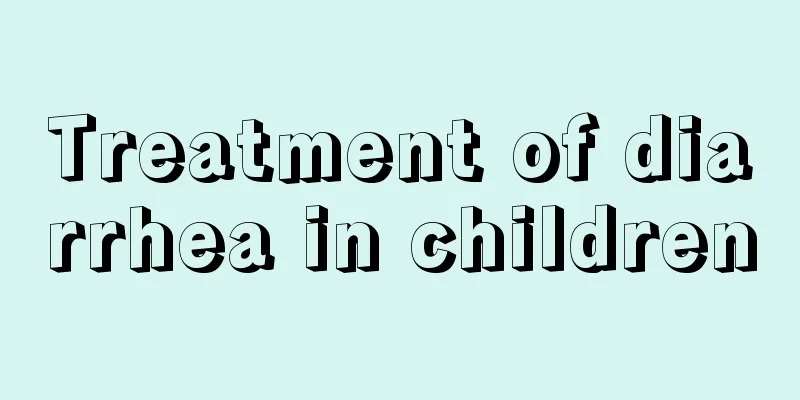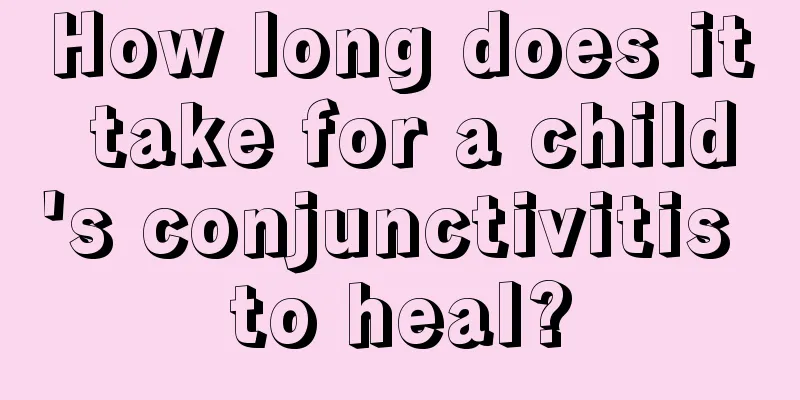Causes and treatment of blueness around the baby's mouth

|
If the area around the baby's mouth turns blue, it means that there is a problem in some aspect of the baby's body. Parents should pay attention to it in time. Because although this is not a serious symptom sometimes, it can become very serious in some cases. So, what exactly causes the blue area around the baby's mouth? And what should we do? Next, let’s follow the editor to take a look. 1. Changes in the lips of infants are often caused by lung disease and cardiovascular systemic heart disease. In particular, if the lips turn purple or blue, you need to take the initiative to diagnose and consult a pediatrician. Auscultation of the lungs and color Doppler ultrasound of the heart can be performed to determine the structure and function of the heart, the cause, and reasonable treatment. If you have any questions, ask them promptly. 2. Blue lips are a sign of hypoxia, and further examination of the heart and lungs should be conducted, especially to rule out the possibility of congenital heart disease. It may be a lack of trace elements and vitamins. It is recommended that you take zinc gluconate orally, or take vitamin B complex. You must drink more water and eat more vegetables on a regular basis. Don't eat MSG or chicken essence. It is recommended that you must avoid spicy food. 3. If the heart is not in good condition and there is a history of this disease in the family, it is best to take the child for a check-up. Believe in science and go to the cardiology department to have the child undergo a cardiac ultrasound for treatment! 4. The baby's mouth is blue, lips are cyanotic, breathing is uneven, and heartbeat is rapid. Red cheeks may be related to the baby's superficial capillaries. .Everyone is fine now. If you are worried, please check it out. 5. According to traditional Chinese medicine, the child may have caught a cold. You can use a toothpick. It is recommended to use the kind of toothpicks that are not pointed at one end, use 5-6 pieces (some toothpicks are pointed at both ends and can be used to pick teeth), and use the round end (adults can use the pointed end) to lightly poke the back of the child's neck and the shoulder connected to the neck. See if the child shrinks his shoulders (that is, tilts his head back and shrinks his shoulders up). If he does, there is definitely wind. If the child does not shrink and simply avoids, then there is no wind. The above is all the content that the editor introduced to you about the blue area around the baby’s mouth. I believe that after reading it, you should have a certain understanding of the blue area around the baby’s mouth. In fact, every change in a child’s body affects the parents’ hearts, so we wish all children can grow up healthily. |
<<: What to do if your baby has black lips
>>: How to drink milk to help newborn baby's height
Recommend
Child's nosebleed
Nosebleeds are a common phenomenon. Most people m...
Children's toenails peeling
Toenails can often reflect the health of the body...
What are some appetizer teas for children?
Many children don’t like to eat, which makes many...
What is the dietary treatment for children's constipation?
Some children may have gastrointestinal problems,...
Is dragon fruit effective for baby constipation?
Both adults and children can suffer from constipa...
What to do if your child has less hair
In fact, parents should know in time if their chi...
What to do if your eight-month-old baby has allergies
Babies' skin is very delicate and they are pr...
What should I do if children cough in the evening or morning?
Children are prone to coughing at night and in th...
What are good foods for children to eat to nourish their brains?
When children are growing up, parents should not ...
How to take baby's temperature
Babies are very difficult to take care of because...
Six breakfast foods to keep your child nutritious
Breakfast nutrition is the basis of the day, so i...
Children with delayed neurodevelopment
Nerves are very important components of our body,...
How to test the height of a two-year-old baby
The method of testing the height of a two-year-ol...
What are the symptoms of diarrhea and dehydration in children?
Because children often eat randomly and their sto...
How to judge the recurrence of Kawasaki disease
Kawasaki disease is a childhood disease that affe...









